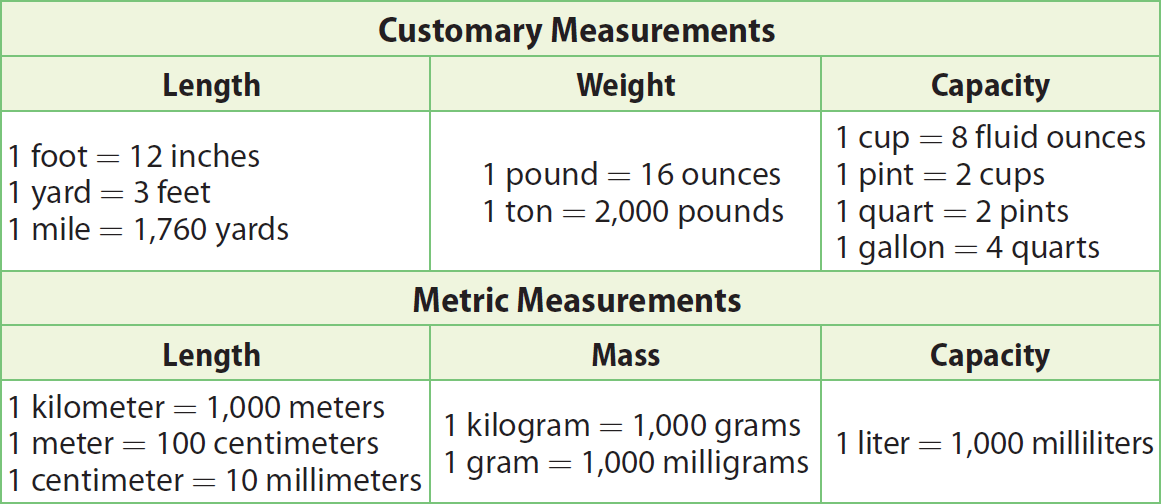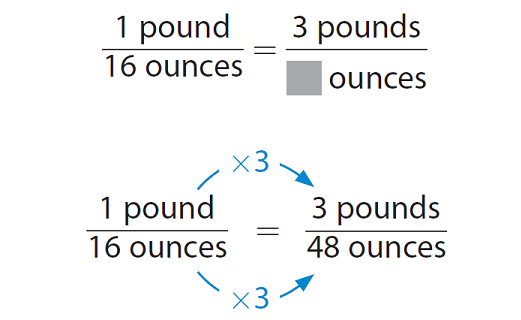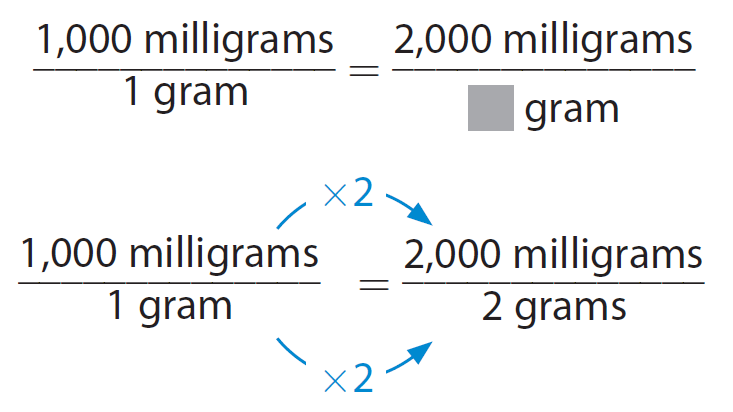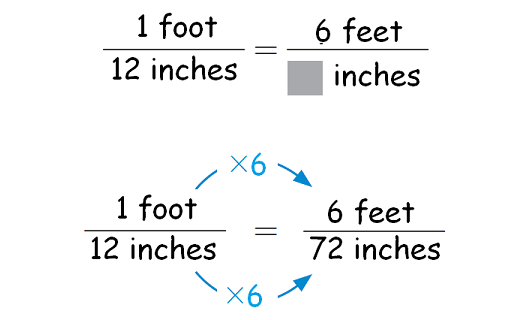CONVERTING UNITS USING RATIOS AND PROPORTIONS
Subscribe to our ▶️ YouTube channel 🔴 for the latest videos, updates, and tips.
We can use ratios and proportions to convert both customary and metric units.
Use the table below to convert from one unit to another within the same measurement system.

Each relationship in the table can be described by two ratios.
For example, because 1 quart = 2 pints, we can write two ratios 1 quart/2 pints and 2 pints/1 quart.
Problem 1 :
An average human brain weighs 3 pounds. What is this weight in ounces ? Use a proportion to convert 3 pounds to ounces.
Solution :
Step 1 :
Identify the ratio that compares the units involved.
The units pounds and ounces are customary units of weight.
Find the relationship of those units in the weight section of the customary measurements table.
1 pound = 16 ounces
Step 2 :
Write a proportion.

Because 1 x 3 = 3, multiply 16 by 3.
A weight of 3 pounds is equal to 48 ounces.
Problem 2 :
A moderate amount of daily sodium consumption is 2,000 milligrams. What is this mass in grams ? Use a proportion to convert 2,000 milligrams to grams.
Solution :
Step 1 :
Identify the ratio that compares the units involved.
The units, milligrams and grams, are metric units of mass.
Find the relationship of those units in the mass section of the metric measurements table :
1 gram = 1,000 milligrams
Step 2 :
Write a proportion.

Because 1000 x 2 = 2000, multiply 1 by 2.
A mass of 2,000 milligrams is equal to 2 grams.
Problem 3 :
The height of a doorway is 6 feet. What is the height of the doorway in inches?
Solution :
Step 1 :
Identify the ratio that compares the units involved.
The units feet and inches are customary units of length.
Find the relationship of those units in the length section of the customary measurements table :
1 foot = 12 inches
Step 2 :
Write a proportion.

Because 1 x 6 = 6, multiply 12 by 6.
A length of 6 feet is equal to 72 inches.
Subscribe to our ▶️ YouTube channel 🔴 for the latest videos, updates, and tips.
Kindly mail your feedback to v4formath@gmail.com
We always appreciate your feedback.
©All rights reserved. onlinemath4all.com
Recent Articles
-
10 Hard SAT Math Questions (Part - 38)
Dec 08, 25 12:12 AM
10 Hard SAT Math Questions (Part - 38) -
SAT Math Practice
Dec 05, 25 04:04 AM
SAT Math Practice - Different Topics - Concept - Formulas - Example problems with step by step explanation -
10 Hard SAT Math Questions (Part - 37)
Dec 03, 25 07:02 AM
10 Hard SAT Math Questions (Part - 37)


